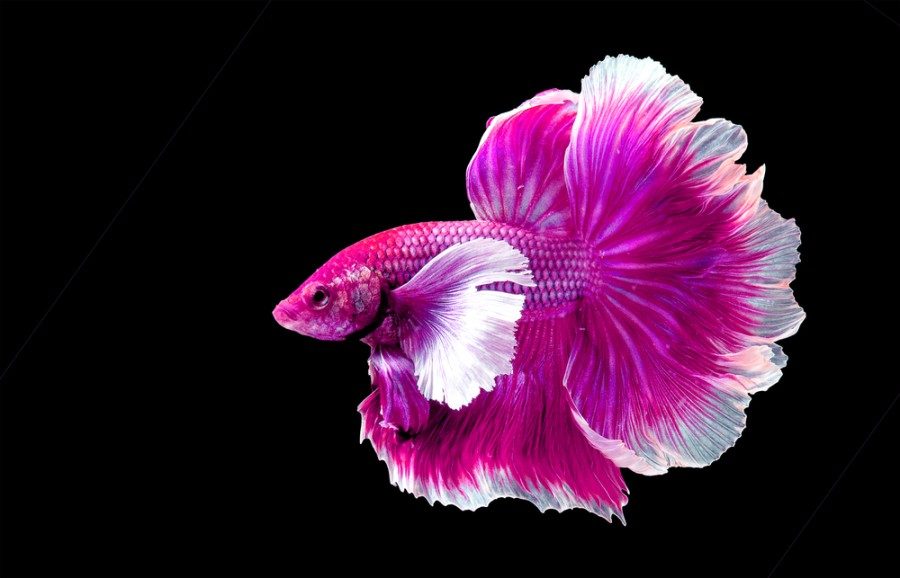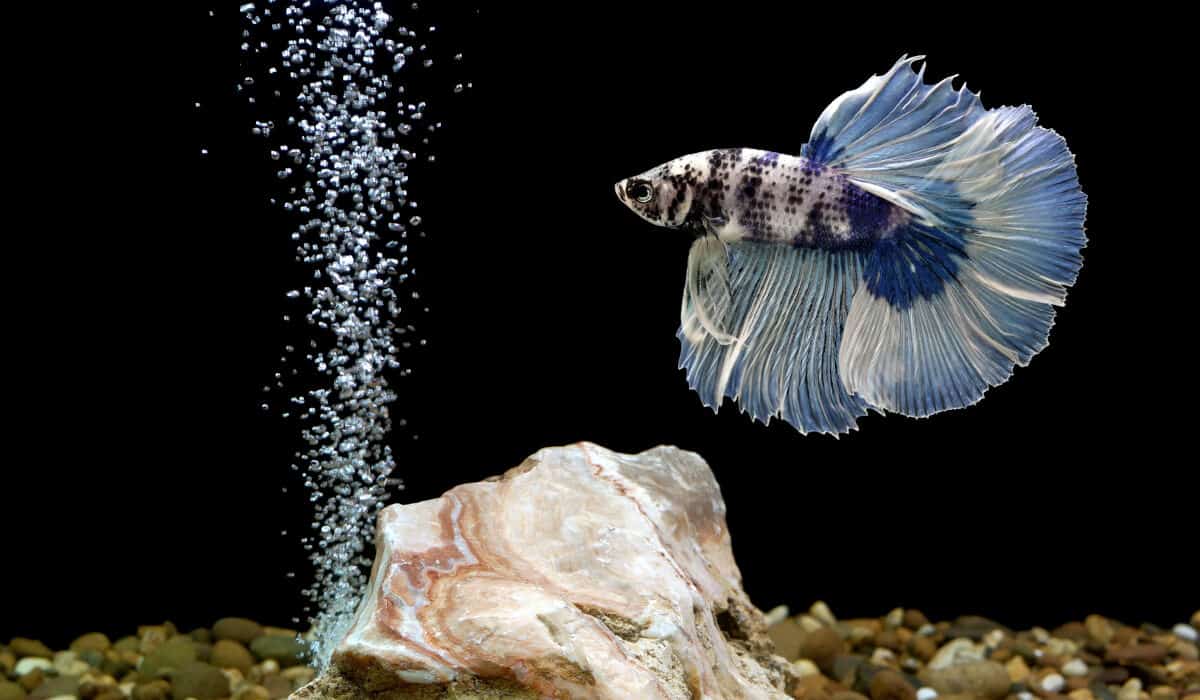The History of Betta Fish: Origins & Landmark Moments

Updated on
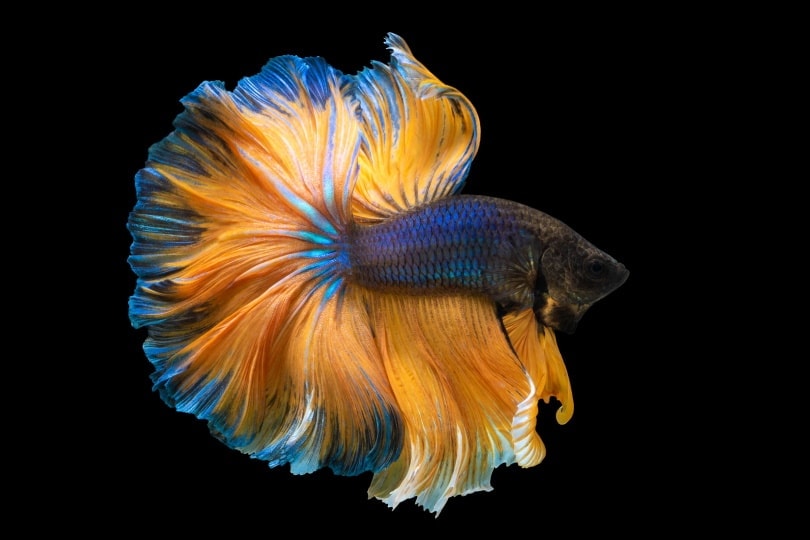
From the muddy rice paddies of Thailand to prestigious aquariums in Paris, this ‘ugly duckling’ fish had a rise to fame worthy of a Hollywood blockbuster!
In this article, we take a cursory look at betta fish history and how they came to be so prized, loved and prominent in our aquariums today.
 Betta Fish Origins: Where Do Betta Fish Come From?
Betta Fish Origins: Where Do Betta Fish Come From?
Also known as ‘Siamese Fighting Fish’, the betta’s origins date back hundreds of years to their native home of the Mekong basin of Laos, Thailand (formally Siam), Cambodia, Malaysia, Indonesia, Vietnam and parts of China.
Wild betta could be found in their natural habitat, living in shallow ponds, rice paddies, and moving streams containing water of a temperature at or above 80 degrees.
They belong to a special group known as ‘labyrinth’ fish, who can survive in very little water by using this organ to breathe oxygen from the surface of the water.
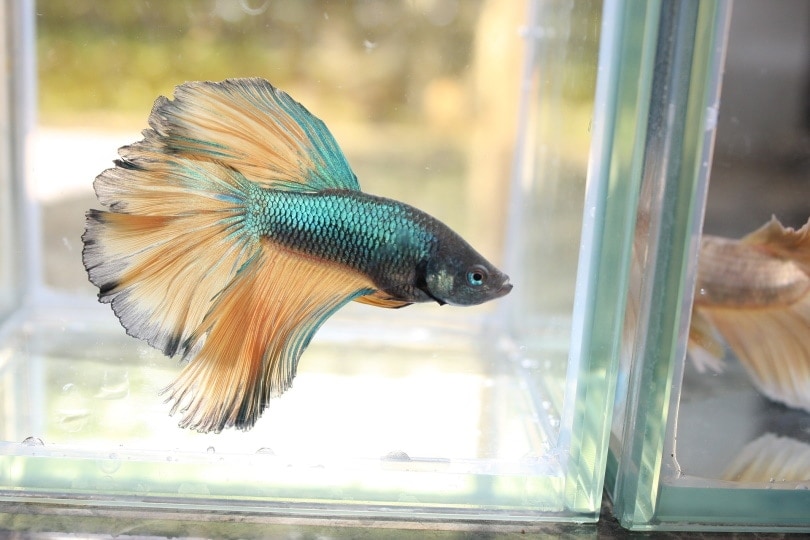
A Popular Past-time
Even before the 1800s, children of Malaysia were intrigued by betta. Collecting as many as 50 of them at a time from rice paddies, they would then host fights with the winner becoming the ‘village champion’.
Once the fight was over and the winners wounds healed, it would battle a new opponent.
Advancements in the harvesting of rice paddies (such as mechanical plowing and the addition of chemicals) suddenly meant bettas weren’t commonly found in these shallow paddies anymore.
Although the fish still made shallow ponds and river streams their home, their lack of availability in rice paddies caused this once-popular pastime to fade away.
Lean Mean Fighting Machines
Male bettas are known for their aggressive behavior, especially their love of biting and tearing at their opponent in a fight. This would inflict life-threatening wounds, meaning each fight only lasted a few minutes.
In Siam, they started to breed them specifically for battle. The new fighting machines could withstand their injuries and last for hours in a fight.
Suddenly the winning fish wasn’t the one left swimming around in the bowl, but the ‘bravest’ one most determined to keep fighting.
Betta fights were so popular, they also became a ‘sport’ to bet on. Men would suffer horrible consequences when a fight didn’t go their way. It wasn’t always money at stake though, with some men even betting and losing the family home and even members of their family!
This sport was loved so much, the King of Siam began licensing it and even started collected betta himself.
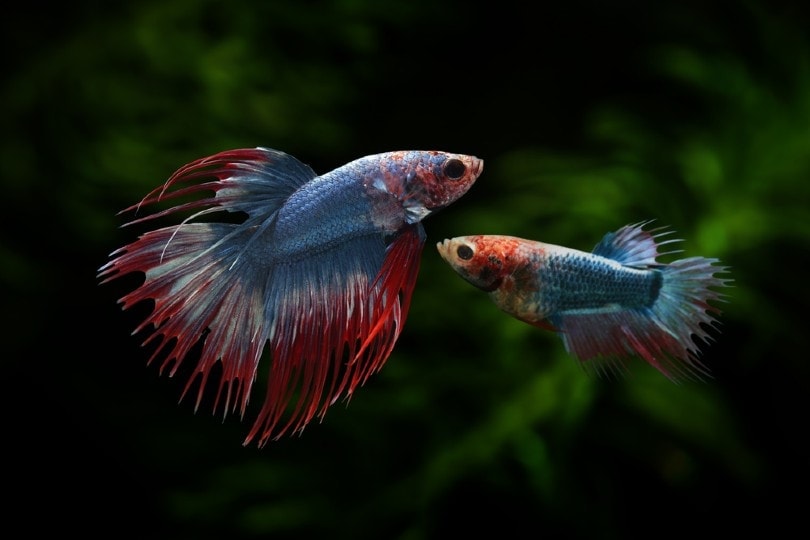
How and When Did Betta Fish Get Their Name?
In 1840, the King of Siam became curious to find out more about these little fighting fish. He gave some of his most-prized ones to a man who passed them on to Bangor medical scientist Dr. Theodor Cantor.
In 1849, Cantor published an article about the fighting fish, naming them ‘Macropodus Pugnax’.
In 1909, a man named Tate Regan discovered there was already a species named ‘Macropodus Pugnax’. He decided to call them ‘Betta splendens’ instead, taking inspiration from famous warriors known as the “Bettah” tribe. ‘Splendens’ also referred to the breed’s splendid (or impressive) appearance.
Modern Betta Fish History: From Europe to the USA
By the late 1800s, these ‘Betta splendens’ had gained in popularity and were first introduced into Paris in 1892 by aquarium fish importer Pierre Carbonnier.
In 1896, they were also imported from Moscow into Berlin by a German importer, Paul Matte.
In 1910, they then made their way to the USA. It wasn’t until 1927 that one of the first colorful breeds of Betta Splenden was discovered after being imported into San Francisco by Frank Locke. This unique-looking specimen had developed unusually red fins as a result of a color mutation during breeding.
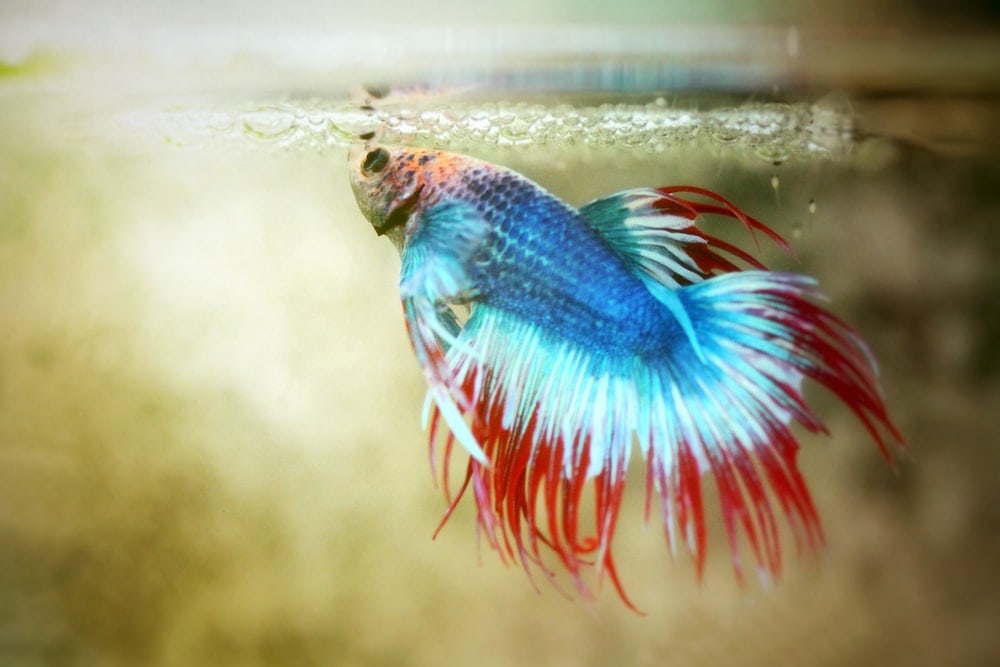
Our Fascination With Color and Pattern
Betta originally didn’t look anything like the spectacular specimens they are today. Prior to the late 19th Century, they were a murky brown-green hue with much smaller fins.
Scientists discovered they naturally displayed vibrant shades of color when agitated. During the 20th Century, breeders were able to make this a permanent feature of the fish.
Through experimentation with breeding, betta are now available in a wide variety of colors, including: red, orange, pink, cream, blue, green, black and opaque white.
Nicknamed ‘the jewel of the Orient’, they also have an iridescence when of the blue or green variety.
Breeders have recently been able to create metallic variations, known as the ‘Dragon’. Shades include copper, gold, silver, and rust.
In 2004 in Thailand, Mr. Tea first presented the public with his newly-developed ‘Dragon’ betta, but their silver coloring did not cover their entire body.
In 2005, Mr. Somchat of the Interfish breeder team presented a more impressive second version of the ‘Dragon’.
Around this time, Victoria Parnell-Stark was producing an “Armadillo” range of betta. They had much heavier iridescence and metallic masked faces, proving to be really popular.
In recent years, breeders have also been able to create patterned varieties. A marbling effect has been achieved using the colors blue and red with a pale base color.
Another popular pattern is known as ‘butterfly’ coloring. This is where the body contains a solid color and the fins have two different, distinct hues.
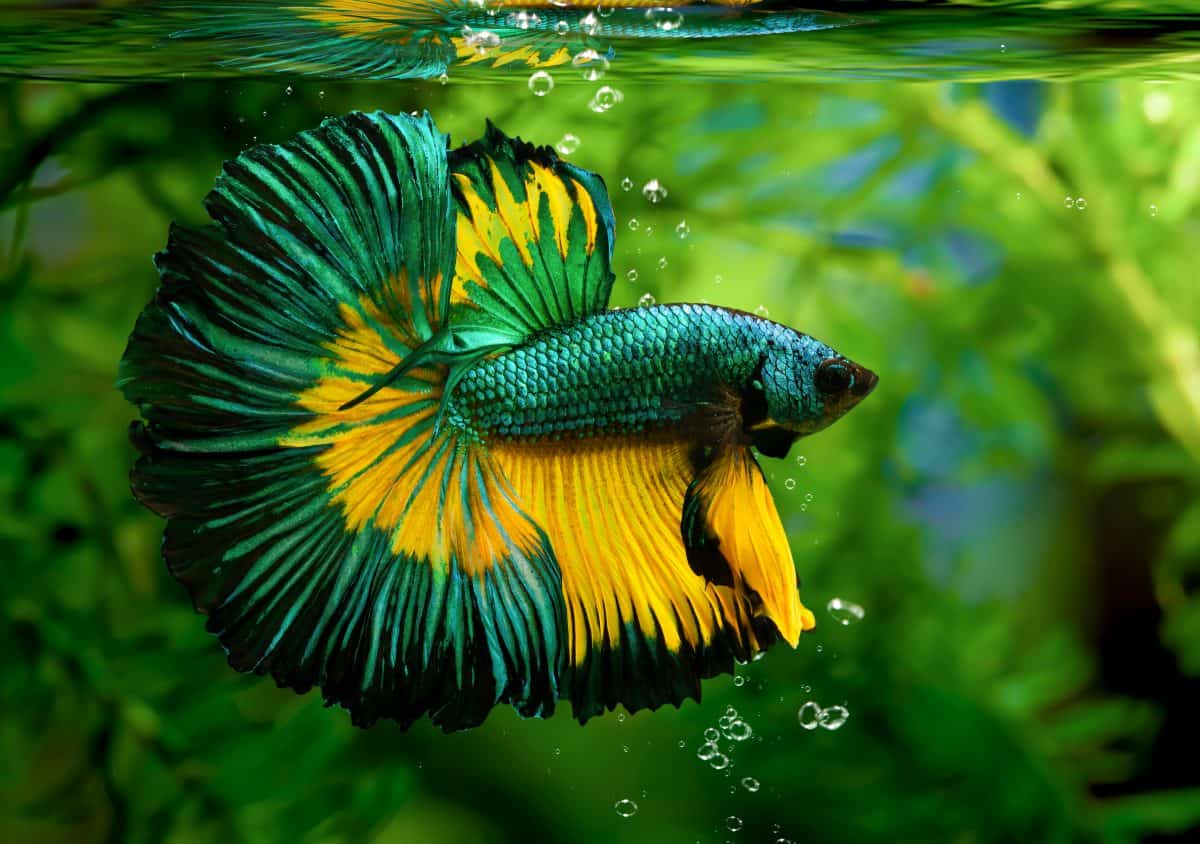
From Fighters to Beautiful, Fancy Aquarium Fish
Determined to make these fish even fancier, they have also been bred over the years to have impressive tail fins. The most common of these is the ‘Veil Tail’, where the tail arches upwards before draping down to represent a veil.
The ‘Crown Tail’ betta has a fanned tail of separated tips, quite similar to a spikey Mohawk hairstyle.
A ‘Half-Moon Tail’ has a 180-degree tail spread with straight edges, resembling a half-moon.
Another fancy type of tail is the ‘Rose Tail’, which looks like flower petals gradually overlapping each other.
The ‘Feather Tail’ variety looks very similar to the ‘Rose Tail’ variety, but the fanned tail has delicate, feathered ends.
These are the most common types of betta tails, however other varieties include the ‘Double Tail’, ‘Spade Tail’, ‘Delta’, ‘Super Delta’ and many others.
 Conclusion
Conclusion
It’s mind-blowing to imagine how the original breed of betta with its short fins and murky coloring has developed into the extravagant fish we know of today!
We hope this article has shed some light on betta fish history and the origins of this beautiful creature.
Happy fishkeeping!
Featured Image Credit: Buddy BIGPhotographer, Shutterstock
 Betta Fish Origins: Where Do Betta Fish Come From?
Betta Fish Origins: Where Do Betta Fish Come From?
 Conclusion
Conclusion